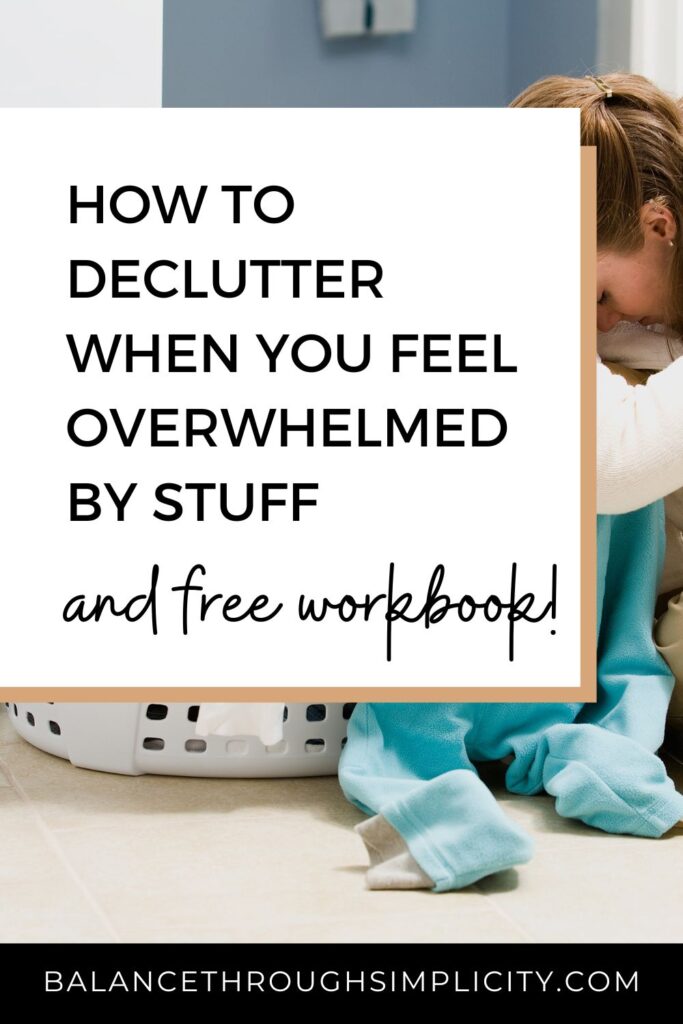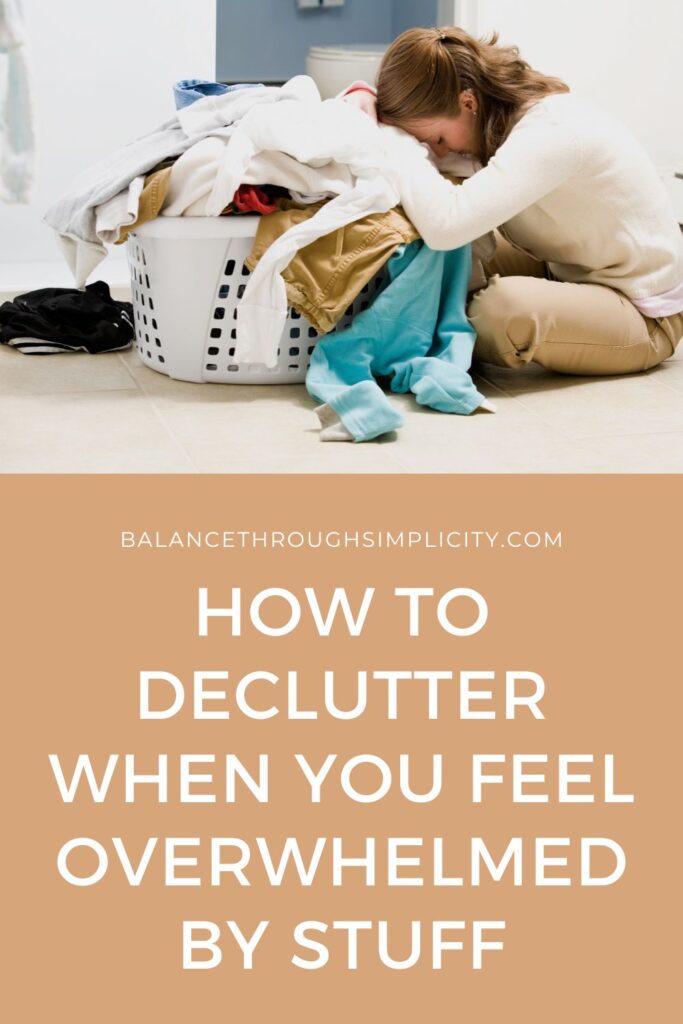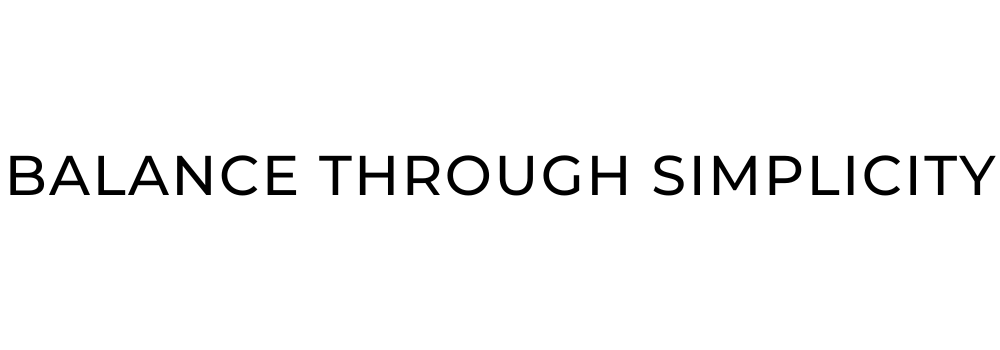HOW TO DECLUTTER WHEN YOU FEEL OVERWHELMED BY STUFF
Decluttering our homes can be tough. Getting rid of our stuff can be hard, physically and emotionally but particularly if we have a lot of clutter, not much time and don’t know how and where to start. If you feel overwhelmed by your stuff, here are some tips on how to declutter when you feel overwhelmed by stuff.
DECLUTTERING ISN’T ALWAYS EASY
Decluttering feels like it should be easy doesn’t it? You just get rid of the stuff you don’t want and keep the stuff you do. Right? Well, yes in theory that’s what decluttering is. Yet, in reality, decluttering for some of us can be far from easy.
Here are some scenarios which you might recognise…
- You’ve got no time or energy
- You’ve always got the kids with you
- Your partner doesn’t understand what you want to do
- You’ve got lots of stuff
- You’re a bit of a hoarder and struggle to let go
- You don’t like throwing things away or wasting money
- You don’t know where or how to start
Decluttering can feel overwhelming, physically and emotionally, for a number of reasons. The problem is, when something feels overwhelming, we put it off, find excuses, procrastinate, save it for another day, or just continue as we always have done – stressed out by our stuff. We get stuck in a decluttering rut.
Clutter won’t go away just because you pretend it’s not there. And, often, clutter tries to invade our homes every day, from junk mail through the letterbox, packaging on our food and emails into our inbox.
Clutter grows and it costs us time, money, energy, freedom and more. So, if you’re feeling overwhelmed by your clutter already, but want to do something about it, you might need to deal with it sooner rather than later before your clutter grows some more and creeps into spaces without you realising.
There are many benefits of decluttering your home, including having more space, a better functioning and peaceful home, a more welcoming environment for guests, a calming place to relax and it’s also easier to keep clean and tidy.
So, let’s tackle your clutter together! Read on for some helpful tips on how to declutter when you feel overwhelmed.
HOW TO DECLUTTER WHEN YOU FEEL OVERWHELMED BY STUFF
Here are some ideas and tips to try when you want to declutter your home but feel overwhelmed and stuck. I hope they help!
1. Find your why
Every course I offer and many blog posts I’ve written on decluttering start with finding your why. Why do you want to declutter? What do you want to change about your home and life? Why do you want to make those changes? What do you hope your home and life will be like afterwards?
We all need a motivation or reason for doing something and decluttering is no exception. If decluttering feels hard, you’re overwhelmed by stuff or you don’t know where to start, then start with understanding WHY you want to declutter.
Not only will this help you have a clear vision of what you want to achieve, it will help you summon up the motivation to start and the confidence and incentive to keep going when you get stuck.
Action point: Try these decluttering journal prompts to help you understand your why or take a look at these decluttering goals to see if they resonate with you.
2. Have a plan
Decluttering your entire home or even just loosely saying you want to declutter your stuff can feel big, scary and overwhelming. According to this article in the LA Times, the average American home has around 300,000 items in it. That’s a lot of stuff so no wonder many of us feel overwhelmed by decluttering!
The best way to achieve big goals is to break them down into smaller steps with a plan. You can then work your way through the plan, step by step, in manageable pieces. Within your plan you can decide what area you want to declutter first, how to find time for decluttering in your schedule and what you’ll need with you to declutter effectively.
Action point: You can create your own action plan with a pen and paper, working out the what, where and how of decluttering. Or, you might enjoy using this free printable Decluttering Action Plan that I’ve put together for you.
3. Follow a decluttering checklist or take a decluttering challenge
One of the reasons why decluttering can feel overwhelming is that we feel we’re doing it on our own without support or guidance. I know how this feels because I felt like that too. I also know that I made a lot of mistakes and false starts when I was just starting out to declutter my own home.
I got confused by where to start, frustrated at lack of time and not making speedy progress. More than that, I often found it easy to throw out a few random bits of obvious clutter, but then got stuck with other items. How could I declutter without feeling guilty, sad, anxious and overwhelmed.
One fun, structured and (for some) least overwhelming way to declutter our homes, or at least get started, is by following a checklist or taking a challenge. This approach isn’t for everyone as some people get overwhelmed just by the checklist themselves, but it might work for you.
Decluttering checklists and challenges give you structure, method, an easy way to tick off decluttered items and track your progress so you build momentum and confidence and you’re ready to go it alone!
Action point: Try this free decluttering checklist of 100 things to get rid of right now or take the free 30 day Declutter Challenge for some structured decluttering fun!

4. Prepare beforehand
Decluttering can be emotionally and physically draining. Not only could you be moving, reaching, bending and lifting but you’re also going to be making lots of decluttering decisions on what to keep and what to get rid of.
Just like an athlete would warm up before a race, there are a few things you can do to make decluttering less overwhelming and easier. Decluttering isn’t like running a race but setting yourself up for success starts before you even get rid of stuff.
Think about what you might need to make decluttering easier, quicker and more comfortable. Do you need boxes, bin bags, a drink, background music, a table on which to sort stuff, a friend to help you, an empty car in which to throw your donations?
Preparing before you declutter could save you time and stress and make your decluttering more effective in the time you have available.
Action point: Take a look at this article on things to do before decluttering to give you some more tips.
5. Start small
The hardest part of anything is usually getting started in the first place. Whether you have one cupboard or a whole house to declutter, you’ll still have to start somewhere. Once you’ve started, the momentum and confidence you gather will hopefully encourage you to continue and decluttering gets easier with practice.
Here are some very tiny projects for you to start with (and how you can build on them if you have time and inclination):
- Delete an unused app from your phone (then try deleting all unused apps and re-order the ones you’re keeping)
- Donate one book (moving onto the whole shelf)
- Remove 5 old or unwanted emails from your inbox, not mine hopefully(!), (aim towards all unwanted emails and re-order/archive what’s left)
- Throw out any empty or very-nearly-empty bottles in your bathroom (then have a go at the flat surfaces and storage in your bathroom)
- One shelf in your fridge (moving onto the whole fridge)
Starting can be small but effective, especially when you consider that even big projects need to start somewhere to be successful.
6. Start in an easy place
If decluttering feels overwhelming then you might want to start in a place of least resistance. It should be easy and quick to declutter and where you can both SEE and FEEL the results pretty soon. This will hopefully give you the incentive, motivation and encouragement to keep decluttering other areas of your home.
The bathroom is a great place to start decluttering. It’s usually one of the smaller rooms in the home, with a limited amount of stuff and no difficult-to-declutter items such as sentimental pieces for you to get stuck deliberating over. We tend to know what bath and beauty products we do and don’t use. There’s also often a limited amount of storage space so we can use that to determine how much stuff to keep, rather than making more personal and subjective decisions which are more difficult!
Action point: Read more about how to declutter the bathroom and get a free Bathroom Declutter Checklist to help you get started.
7. Start where it will make most difference
In a way this is the opposite advice of the point mentioned above. Yet, different people work in different ways so you might find this decluttering approach more effective if you’re feeling overwhelmed by clutter and need to make some changes.
Although I normally suggest starting small and easy, sometimes it pays to dive in at the deep end. Is there one area of your home or type of stuff that’s causing you most stress?
- Toys everywhere?
- Kitchen counters that make preparing meals stressful?
- An entryway that looks like a dumping ground?
- Paper clutter mountains on tables and floors?
Does it make living in, managing and enjoying your home difficult? Do you dread walking into this room or dealing with this space to the point that it’s affecting you negatively?
If you’re nodding yes, then perhaps decluttering this could be the key to decluttering without feeling overwhelmed. Just imagine the difference it would make to you, your family and your home, if this area or stuff was clutter-free? And, once you’ve experienced this difference, maybe you’ll be inspired to continue decluttering because you know it’s well worth the effort!
8. Declutter in waves
Decluttering feels overwhelming when we try to declutter everything all in one go. Decluttering is a bit like peeling back the layers of an onion. Every time you declutter you remove the outer layer of clutter and it reveals a little more of the clutter (or onion layer) underneath.
Why not apply the same approach to your stuff by decluttering in waves. Declutter the most obvious items first and then see what’s left. Return and do another wave or ‘peeling back’ when you’ve got time and energy. Each wave of decluttering will reveal another bit of clutter that you might be able to get rid of.
- Clear big and bulky items such as excess furniture first to instantly create more space and make sorting through your clutter easier.
- Get rid of rubbish, items that don’t belong in that room or that you know you definitely don’t want to keep.
- Remove excess décor, wall art, accessories such as cushions and throws you don’t need.
Keep going back in smaller waves and each time you’ll notice something new in the room that you hadn’t noticed before. Decluttering gets easier with practice so just dive in and get started!
Action point: After you’ve decluttered, the space might still feel overwhelming. Here are some things that make your home still look cluttered after decluttering. Do you recognise any of them in your own home?
9. Break it down into manageable chunks
Earlier in this article I mentioned how helpful it is to break big decluttering goals down into smaller actionable steps. In the same way, decluttering can feel like a huge project.
When faced with a task that’s too overwhelming and that we can’t see a way through to the finish line, many of us get stuck like a deer in headlights. Where to start, how to start, too many decisions and options and it just feels too much.
If you struggle with this, why not consider breaking decluttering down into manageable chunks. Some examples could be:
- Decluttering the kitchen – break it up into cupboards, drawers, worktops, gadgets, appliances, the fridge, stock cupboard and so on.
- Decluttering toys – break it up into different types of toys such as Lego, trainsets, arts and crafts, dolls etc.
- Decluttering books – break it up into cookbooks, reference books, fiction and non-fiction
I’m sure you can think of many other examples around your own home. Tackle them one-by-one in stages, so it feels easier and less overwhelming than attempting to do the kitchen/toys/books in one go. Not only will it be less overwhelming, but it might also fit better with the time and energy you have available!
10. Take regular breaks
Make sure you give yourself plenty of breaks, perhaps for a cup of coffee whilst you sit down and assess your progress and/or next steps. Decluttering doesn’t have to be done all in one go. As you’ll read further on in this article, there’s a lot to be said for taking your time and not rushing.
Your clutter won’t go anywhere (unless you actively get rid of it of course!) so do what you can, when you can. As the story of the tortoise and the hare teaches us, slow and steady wins the race.
Taking regular breaks makes decluttering more manageable, enjoyable and realistic. It also helps if you’re decluttering alongside other challenges such as the daunting task of moving home, decluttering as a senior in later life, or decluttering in mid-life.
Give yourself a reward for a decluttering session well done with a regular break.
Action point: You could even try something like the Pomodoro Method. This is a well-known time management and productivity technique. You set a timer for 25 minutes, do whatever you need to do in this time, then have a 5 minute break. Then do another 25 minutes of your task, then take another 5 minute break. Continue as long as you want. You don’t need to do 25 minutes, you could do 10 minutes with a 10 minute break, but the idea is that you do regular slots of work or decluttering with regular break intervals. Give it a try and see if it works for you!

11. Avoid difficult-to-declutter areas
Decluttering may be about clearing out our stuff but I think there’s an important distinction that often gets overlooked. Decluttering can require getting rid of things but it can also require letting go.
Whilst we might get rid of mouldy food, we let go of our baby’s clothes or fuzzy old photos. The difference is the emotion that these items make us think and feel. It’s easy to ‘get rid of’ some items but much more difficult to ‘let go’ of sentimental items that make us remember past events, people and places.
Difficult-to-declutter areas could also be large storage spaces such as lofts, sheds and garages. These spaces typically hold a lot of stuff, unsorted, uncategorised and often not decluttered for years at a time.
Another example of a difficult-to-declutter area is where you have a lot of stuff, such as a craft room, that also requires organisation.
Start with the easy spaces and stuff that I’ve mentioned above and leave difficult-to-declutter areas for now until you’re more confident with decluttering.
Action point: Read these thoughts on whether decluttering is about letting go or getting rid of stuff.
12. Decide what to do with unwanted stuff
One of the biggest problems with decluttering is knowing what to do with the stuff you don’t want to keep. After you’ve spent time and energy gathering your clutter into boxes and bags, you want to avoid it piling up in the hall, garage or in your car.
Not only will it still be cluttering up your home, you (or your family) might even be tempted to root through it again which undoes all your hard work.
When it comes to deciding what to do with your unwanted stuff, you really have 4 main options:
- Donate
- Recycle
- Sell
- Throw away
It’s a personal choice and there are pros and cons to each. It might depend on your financial circumstances, the quality and value of the item you’re decluttering and how easily can you take items to be sold, donated or recycled. For example, many of the charity shops (thrift stores) around me place limits on how many books or toys you can donate but donating is much easier than selling so I try to do this whenever possible.
Action point: You might find this article helpful where I explore more of the options about what to do with your unwanted stuff and things to consider when deciding for yourself.
13. Reward yourself
If you decluttered some stuff, give yourself a high five and some kind words of encouragement. Treat yourself to a slice of cake, a warm bath, a glass of wine. We all need an incentive sometimes to look forward to!
Decluttering might feel overwhelming but there’s plenty of reasons to be happy about it too. Just remember those goals and your ‘why’ that we talked about at the start of the article. Getting rid of your clutter isn’t the end goal, it’s just a stepping stone to what’s next!
Action point: Here are some other ways to make decluttering fun for you and your family.
14. Create decluttering habits
It would be lovely if decluttering was a ‘one and done’ project. Declutter once and then that’s it, no need to declutter ever again. However, as most of us know, clutter creeps into our homes on a daily basis, from junk mail on the door mat, to emails in your inbox, to packaging around your food.
Decluttering your home is a great start, but to stay clutter-free it’s vital that you put in place some simple but effective decluttering habits – habits that keep the clutter away on a regular basis.
If decluttering feels overwhelming then you also definitely don’t need the extra hassle of decluttering areas that you’ve already decluttered. Instead, try these habits for a clutter-free home for some ideas for your own home.
15. Declutter little and often
You might find it easier and more convenient to do decluttering little and often rather than dedicating a large chunk of time to it. Declutter slowly and take your time. Not many of us can devote a whole day or weekend to clearing our clutter, or want to for that matter!
Doing 5, 10 or 20 minutes consistently, here or there in small windows, will get you much better results than doing nothing for a week then catching up all Saturday.
Just plan what and where you’re going to declutter with each spare bit of time. This way you’re organised and know what needs to be done in the time you’ve got available, rather than wasting time deciding when you could actually be decluttering.
16. Schedule decluttering into your calendar
Sometimes when we find something overwhelming, we put it off. Put decluttering time into your schedule on a daily, weekly or monthly basis. Set a reminder, plan what you’re going to declutter during that time and make a start when the reminder goes off.
17. Organise after decluttering
Once we’ve decluttered, it can be tempting to organise what’s left. For example, labelling food containers, hanging clothes by colour or category etc, carefully arranging our art and craft supplies. Organising your home is helpful but it’s a big job in itself which could overwhelm you further.
The added benefit of decluttering before organising is that it’s much easier to organise when you have less stuff to manage. You won’t be organising your clutter and can more easily work out how much space you need, what organisation solutions (baskets, boxes etc) are needed which can save time and money.
Action point: Read this article for more reasons to declutter first, then organise!
18. Forget perfection
Decluttering is not a precise science and there are many ways to go about it. Even if you manage to declutter now, I’m sure you’ll continue to find other items to declutter over time. Don’t aim for perfection in decluttering, or getting the process right, just dive in, get started and do your best. Even a little less clutter is a good start!
19. Decluttering mindset
Above all, if you’ve decided to declutter you need to focus. Avoid distractions, push the negative thoughts to one side, commit to what you’re doing, remember why you’re doing it and keep focused on the task at hand. You’ve got this!
- Keep in mind the benefits of owning less stuff. Chat with your partner or a friend about how your decluttering is going, what you want to achieve and how it’s going to make a difference.
- Check in with your emotions regularly before you declutter. If you’re feeling tired or emotional, perhaps leave it for today.
- Stop shopping and bringing new clutter into your home until you’ve got a handle on the clutter you already own.
- Consider the stuff in your home and the messages it sends out about what it requires from you. As Peter Walsh says, “Your home should be the antidote to stress, not the cause.”
Action point: Read more about the importance of a decluttering mindset when it comes to successful, stress-free decluttering.

IF YOU LIKED THIS ARTICLE
If you liked the tips in this article, want to save it for later or you think a friend might find it helpful too, please share it to Pinterest and your favourite social media!
Let me know in the comments if you find decluttering overwhelming. Has this made it difficult for you to declutter or did you find a way to overcome it? I’d love to hear from you so please leave a comment below!
RESOURCES ON DECLUTTERING
- How to declutter your home and life – A complete guide to clearing clutter and keeping it away with simple tips and extra resources to help and inspire you!
- Decluttering and Self-Acceptance and How They Benefit Each Other – Decluttering is about getting rid of stuff but it’s also about understanding the emotions behind why we hold onto that stuff in the first place. In this article I’m sharing some thoughts on the relationship between decluttering and self-acceptance.
- Simplify Your Home – A guide and workbook to help you declutter your entire home, step-by-step with checklists to keep you on track (and keep that clutter away for good!)
- How to Declutter Paperwork and Stop Feeling Overwhelmed by Paper Clutter – Feeling overwhelmed by paper clutter and not sure how to deal with it? Here are some simple, helpful tips on how to declutter paperwork and keep those paper mountains away for good!
DON’T MISS OUT!
I’m Antonia and on this blog I share practical inspiration to simplify your home, time and life. Follow me on Instagram, Facebook and Pinterest! You can also subscribe to Balance Through Simplicity and receive regular simplicity tips straight to your inbox for free. Make sure you never miss an article plus you’ll get a copy of my free Declutter Starter Kit as a welcome gift!

